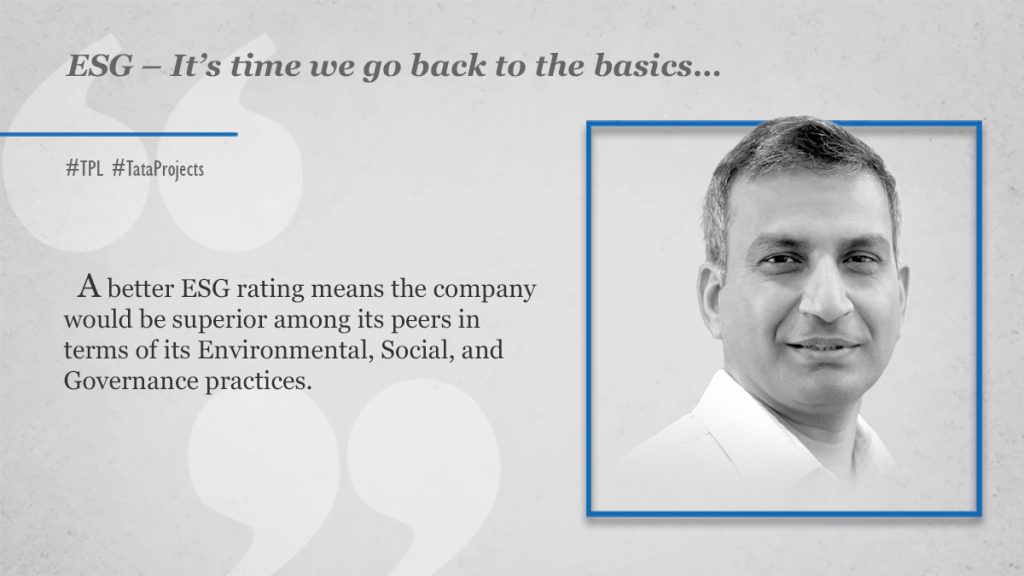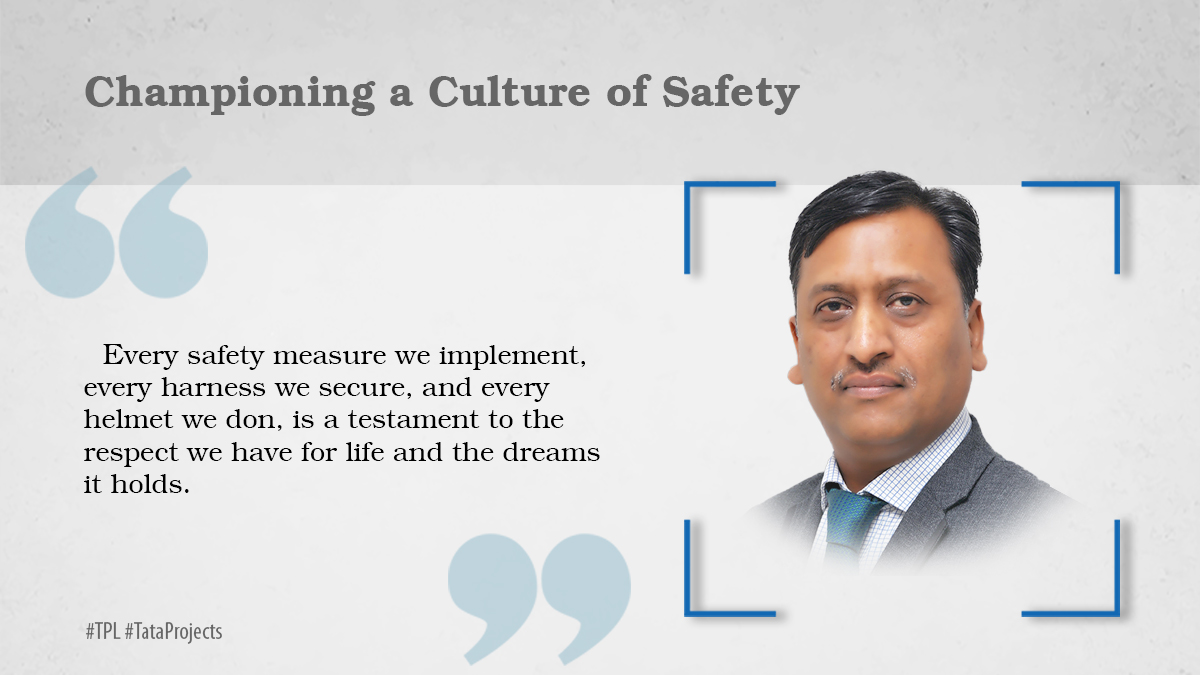A better ESG rating means the company would be superior among its peers in terms of its Environmental, Social, and Governance practices.
Socially responsible investing has been a known concept for several decades now. In the past, it was used to drive behaviour against tobacco, alcohol producing companies or apartheid in countries. It got prominence in its new avatar since 2006 when UN developed the Principles of Responsible Investing (PRI), and the same framework was adopted for ESG investing. Socially responsible investing has ofcourse been a bedrock of doing business in Tata Group much before it became mainstream.
The ESG concept was soon adopted by the investor community with the notion that ESG was a win-win deliverable, good for both the investors and society. It was also hypothesized that companies with better ESG rating delivered higher returns to the investors. ESG investing got a significant fillip in 2018 when Larry Fink, Co-Founder of Blackrock, world’s largest asset manager with more than US$ 9 trillion assets under management, wrote in annual letter to CEOs of his investee companies that “to prosper over time, every company must not only deliver financial performance, but also show how it makes a positive contribution to society. Companies must benefit all of their stakeholders, including shareholders, employees, customers, and the communities in which they operate.” When a person managing assets almost 3 times India’s GDP says something, world sits up and takes notice!
More than 90% of S&P 500 companies now publish ESG reports in some form, and it is estimated that global ESG assets account for one third of assets under management. ESG related disclosures are at various stages of being mandated by regulatory bodies across major countries. However, as it gains momentum, various voices are also being raised against the ESG juggernaut. There have been several opinion pieces arguing against ESG across different sections of society. These voices are questioning its social impact, measurement objectivity, correlation with financial returns etc. Investors are also expressing their views through their actions. As per a report by Morningstar, assets flowing into ESG funds peaked in the first quarter of 2021 and the funds have started shrinking since then.
The idea of a better ESG rating delivering higher returns to the investors would perhaps be true in the long run. A better ESG rating means the company would be superior among its peers in terms of its Environmental, Social and Governance practices.
A higher Governance rating offering higher returns is a no brainer. Better governance means more independent voices, stronger systems and processes and a better risk management framework within the company. These would reinforce the organization’s market credibility, thereby providing easier and cheaper sources of financing. These would also ensure that decisions taken by the company are thoroughly discussed and there are adequate checks, thus improving its chances of longevity. No wonder that typically companies with better perceived governance trade at higher multiples in the stock market and vice versa.
A company with good Social rating would be more adaptable as it would have close knit relationship with its employees, vendors & community and its products/ services would be safe for society. It would have a diverse employee pool with high employee satisfaction achieved through transparent policies for career growth, succession planning, workplace safety and employee engagement. The company would also have healthy engagement with its vendors so that they are also aligned and have progressive ESG policies. Local community development and relationships are critical for any corporation to operate and any actions it takes should be for the betterment of society. A company with strong relationship with its employees, society and vendors would have their trust, allowing it to be agile and react to operating environment. Having products/ services that are safe and contribute positively to the society/ environment would ensure that the company would not be exposed to any possible regulatory action in future. These characteristics would help the company in ensuring its sustenance in long term. These would however not necessarily be financially rewarding to investors in the short to medium term as many of these practices may involve financial outgo. Unless the company is operating in a market which offers premium to products by such companies, the financial performance of such company could be adversely impacted. So, while the companies with high Social rating would outgrow their peers in long term, the investors tracking their financial performance in short to medium term may not necessarily get rewarded.
The link between Environmental rating and financial performance is the least tenuous of all. A company with high Environmental rating would safeguard the environment, utilize natural resources in a sustainable manner and address the impact of its operations on environment and climate change. However, to draw a linkage between financial performance and environment consciousness of a company is a stretch driven by hope. Environment is a classic representation of concept of negative Externality in Economics. Externalities occur when one person’s actions affect another person’s well-being, and the relevant costs and benefits are not reflected in market prices. So, a corporation taking efforts on cutting its carbon footprint or natural resources would be bearing additional costs compared to its competitors (who may not be environment conscious) but would not benefit as its initiatives would be for the greater good of planet earth and not necessarily directly benefiting the company. The same holds true other way round as well. A company may think of making quick bucks by polluting the environment by stretching the envelope with respect to the environmental laws. These actions would help the company to make higher profits but would be harmful to the entire society. As such, investors to a company with higher Environmental rating could definitely expect more conscious management, but higher financial performance rewards are not assured.
The proponents of ESG investing claim that improving ESG will make firms less risky. This directly contradicts the ESG investors’ expectations of better returns as the bedrock of financial theory is that risks and returns are related. If an asset is less risky, it should have lower expected returns. It also makes anecdotal evidence or case studies reflecting otherwise dubious. Not surprising that the track record of ESG investing has not been consistent so far.
Beyond the investment thesis, questions are being raised about other aspects related to ESG as well.
There is widespread critique of ESG ratings. ESG ratings look and sound like the financial credit ratings by S&P, Fitch, Moody’s etc. However, there are crucial differences: analysts are not yet subject to regulatory scrutiny on conflicts of interest, methodologies or weightages used by different rating agencies are ‘proprietary’ or opaque and the agencies work on unaudited environmental, social and governance data, rather than on audited financial statements. Regulators across countries are seeking to bring more transparency to how the ESG ratings are derived. European Commission is currently discussing regulations that would require ESG rating agencies to be supervised by ESMA and comply with transparency requirements, in particular about their methodology and sources of information. The rating agencies will also be subject to specific measures to prevent and manage conflicts of interests. In India, SEBI has already released a Master Circular requiring the ESG rating agencies to improve the quality and transparency of ESG ratings and address the risks posed by opaque methodologies.
There is also a gap between the perception of what ESG ratings assess and what they actually demonstrate. The scores are not designed to measure corporate performance on carbon emissions or pollution but relative to their peers in the industry or its own past performance. So, we see ESG funds investing in several oil & gas companies, which may be having better ESG rating within the industry, while the sector itself remains fundamentally at odds with environmental preservation. Further, having differential scale for sectors also create anomalous instances like MSCI rating scale where carbon intensity of operations makes up a 20% of the final score for a company that refines oil and gas, but just 12% for one that sells coal.
The subjective scale, perception gap and the fact that ESG ratings are primarily based on self-reported data is giving rise to a system where companies or investors could superficially endorse sustainable practices, indulging in what is known as ‘greenwashing’, without having to demonstrate concrete results or genuine commitment to environmental responsibility. Last year, the Australian Securities and Investments Commission took three funds — Mercer Superannuation, Vanguard Investments Australia and Active Super — to court over greenwashing claims. In one instance, the fund marketed as excluding fossil fuel companies was found to have invested in carbon intensive stocks like Gencore and BHP.
Due to its association with investments, ESG has also unfortunately become a victim of cultural war between conservatives and liberals in USA. While liberal leaning States have embraced ESG focused investing, there is growing scepticism among the conservatives in the USA about net zero and States controlled by the conservatives are pushing back against ESG. More than a dozen States across USA, primarily Republican-led, are implementing new ESG laws that are restricting ESG considerations in investments, contracts, and other areas. Attorneys general of 19 States within USA have written to SEC to examine Blackrock’s ties to various climate groups and ESG objectives conflict with its fiduciary responsibilities. In a recent speech, Larry Fink of Blackrock stated that “He is ashamed to have been drawn into the political debate over the term ESG and that he no longer wants to use the term. However, he still believes in conscientious capitalism and prefers to talk about decarbonization, governance, and social issues”.
Regulators in Europe, on the other hand, are taking a diametrically opposite view and requiring the companies to focus on risks to society and the planet, rather than to business. If this trend were to continue, the companies with global presence might be forced to choose which side of the Atlantic they wished to prioritise.
All these factors are contributing to a loss of trust in ESG among public and the investors. This reflects in the statistic as well where the money manager backed just 7% of environmental and social proposals at companies’ annual meetings in 2023 proxy season, down from 47% two years earlier.
Some of the people defending ESG brush away these issues as teething problems on account of nascent concept and incorrect implementation. However, I think it is more than that. In today’s age, most won’t argue against socially responsible corporates. It is the attempt to measure something nebulous and furthermore linking investments to that measurement, that is raising the stink.
About time we go back to the basics. We do expect the corporations to contribute towards net zero, we do expect them to meet their socio-ethical obligations and we demand the highest standards of governance. They, however, should be judged by their stakeholders and concerned regulators and not rating agencies to drive investments. It is time that we severed the ties between ESG and investment as when money speaks, the truth remains silent.
Himanshu Chaturvedi,
Chief Strategy and Growth Officer,
Tata Projects Limited
Simplify. Create.
























